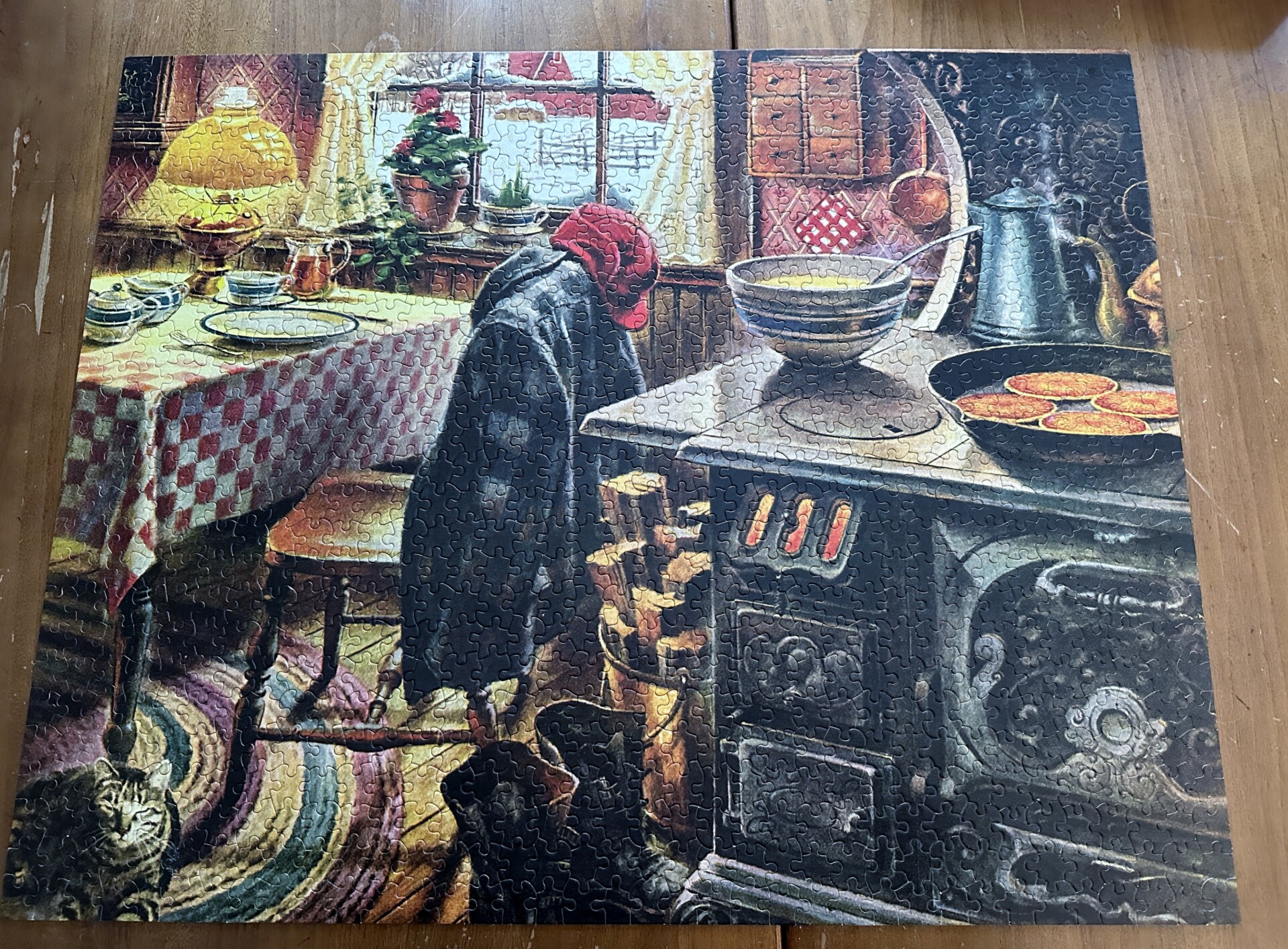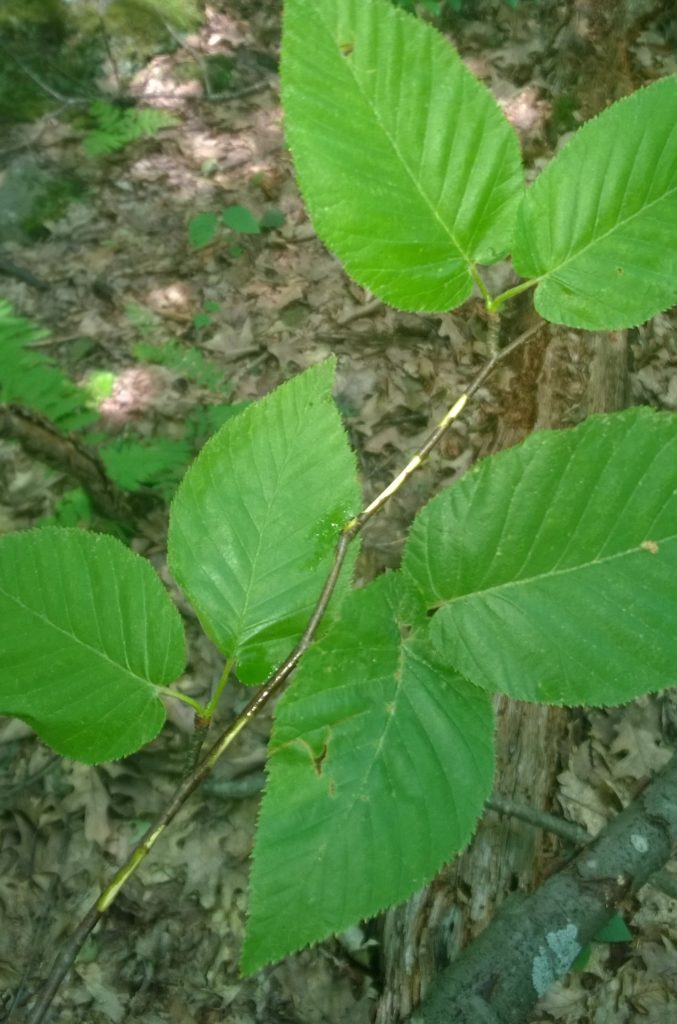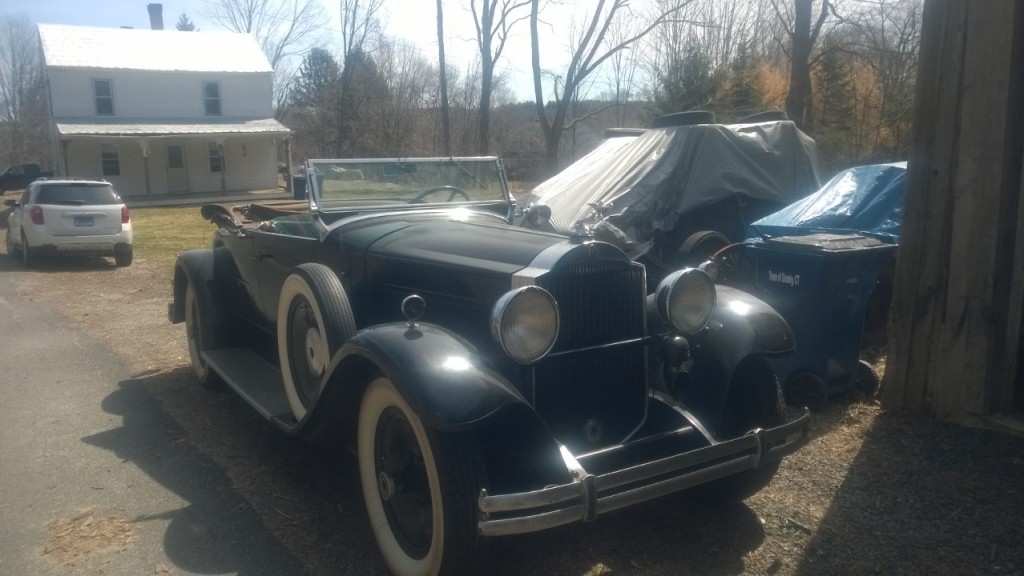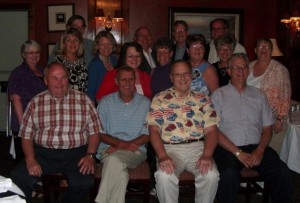A picture that evokes memories
Puzzle season is in full swing at our house. I just finished this gem. It is a favorite these days because it reminds me of so many things from my childhood. Take, for example, the big stove. While the style of this stove is from an earlier generation, we had a wood stove in the kitchen when I was growing up. I helped split wood for it as a teenager. (The pieces for our stove needed to be half the size of the chunks in the picture too.) I remember eating pancakes cooked on that stove quite often. They were a favorite noontime food at our farmhouse. The stove in the picture has a separate opening in the front where wood can be inserted. Our stove did not. Wood was inserted through the round grate on the top. I remember distinctly the tool that went in that little rectangular hole in the top circular grate. One night my mother used it as a prop for a spiritual lesson for her teenage son. She noted how she used that stove poker, as we called it, for so many things. Its manufactured purpose was to lift the hot grates. But we used it also to stoke the stove, moving the pieces of wood wherever they needed to be. It was just a handy little thing. Mom pointed out a lesson that I have never forgotten. If we would allow ourselves to be used by God for his good purposes, whatever that might be, we would be fulfilling our destiny as Christian people. No theologian ever defined sanctification better (Romans 12:1,2).
The oil lamp on the table tells me that the time period of this picture is pre-electricity on the farm. So that would be pre World War II, perhaps during the Depression. By the time I grew up, those oil lamps were already considered antiques, brought out only when the electricity went out. But I still have a couple myself. Yet now that flashlights with good batteries have become ubiquitous, I have not used the old lamps in years. (Is that an oil cloth tablecloth on the table under it?)
As I look out the window in the picture, I notice the tracks in the snow to the barn. The name of this 1000 piece puzzle from White Mountain Puzzles is Country Breakfast. I remember from my childhood farm days that work on the farm commenced before breakfast. The tracks evidence that the farmer in the picture has already been to the barn and spent time there before coming in hungry and ready for a Country Breakfast. The “arctics,” those big black boots with buckles now drying by the stove on the floor, had already been used that morning, making tracks to the barn and back. My father had usually spent at least two hours at the barn before breakfast. As a teen, sometimes in the spring I would be expected to help with those morning chores, and I remember how hungry I was by breakfast.
Of course, there’s the maple syrup on the table too. Farmers often made their own as we did. I remember helping to gather the sweet sap from the trees and helping to feed the fire underneath the boiling pan of sap as my father tended it faithfully to keep it from scorching, something that would ruin the taste. One of my earliest memories is of the year that the spring was too wet for the small tractors of the early 50’s to handle the muddy ruts in the woods. So, my grandfather and my father had rented a team of workhorses to handle the task of gathering sap. I was allowed to “ride” along, meaning hop on the wooden sled with the tank that transported the collected sap to the syrup shanty where it was boiled down.
Did I mention the rug on the floor. My grandmother had several of those braided round or oval rugs. Today you can buy replicas of them, but they are not truly interwoven, only braids stitched together. In the originals, the braids were woven into one another by hand. They were a very sturdy handwork, and a practical way of recycling worn out clothes. They were compromised usually only because someone had chosen a too worn-out or a less durable cloth from which to make a strip.
Even the construction of the room brings back memories. Notice the old wainscoting and chair rail behind the table under the window. Our farmhouse kitchen still had some wainscoting remaining during my childhood.
Well, I think you can see why I like the puzzle. Every time I study it, another memory comes back from the bank of nostalgia, tagged by some detail in the picture. That’s what makes this one so delightful.























